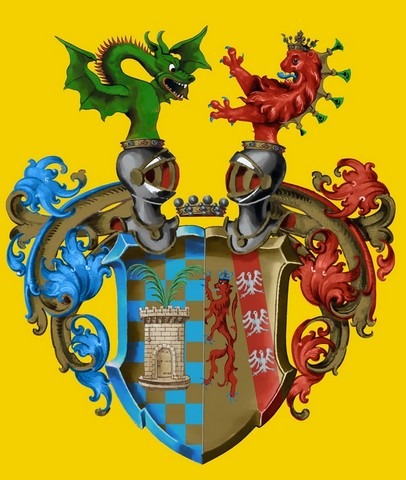angels and me
7 Princes of the Apocalypse
1. Michael, Who is Like God?
2. Gabriel, Strength of God
3. Raphael, Medicine of God
4. Uriel, Fire of God
5. Sealtiel, Prayer of God
6. Jehudiel, Confession/Praise
7. Barachiel, Blessing of God
7 Planetary Archangels
1. The Sun. Michael
2. The Moon. Gabriel
3. Mars. Camael, He Who Seeks God
4. Mercury. Raphael
5. Jupiter. Sachiel, Righteousness of God
6. Venus. Anael, Grace of God
7. Saturn. Cassiel, Speed of God
Seven Angels and Me
The Path of the Christian Mystic invokes BY NAME the 7 Angels Princes of the Apocalypse and the Path of the Wise invokes BY NAME the 7 Archangels who minister the energy of the 7 planets in the Name of God. The two sets of 7 names are different but both paths are anchored in the Sacred Number 7 and both are at the moment frowned upon by Rome.
I, Carmen Baroness of Pinopar, was born in Barcelona in 1952, and I grew up immersed in the deeply mystic and intensely magical Mediterranean culture. My parents were both Catholic and both believed in the Seven Angels but their backgrounds were quite different and so were their perspectives.
My father, Juan, was born in a stronghold of the Knights Templar, the island of Mallorca, and he was a descendant of the Imperial and Royal Houses of Europe, Defenders of the Catholic Church. My father planted in me the seeds of our family’s devotion to the Seven Angels Princes of the Apocalypse Nova. Because of this devotion, I translated from the Latin The Seven Princes of the Angels: Prayers with the Antique Images and four seminal booklets from the Spanish Baroque dedicated to St. Michael, St. Gabriel, St. Raphael and the Guardian Angel.
My father was open- minded. He took Rome with a grain of salt in matters that are not strictly of faith and he was proud of the role that our forefathers played in the preservation of ancient knowledge. There was always a twinkle in his eye when he boasted of the fact that our family gave employment to the greatest astrologers, among them Agrippa, Ficcino and Nostradamus, and that even if some Popes hired astrologers, theirs were not as good as ours. He was especially proud that our ancestor King Alphonse X the Wise in the 13th century rescued and translated extremely rare books, among them the Sefer Raziel-Liber Razielis (The Book of Raziel), Picatrix ( The Book of the Wise), and El Lapidario (The Lapidary). These are seminal books of astrological magic and it is thanks to the Wise King that these texts were preserved and not lost. This ancestral wisdom I apply now in the making of magical devices and charms.
My mother, Hilda, was born during an earthewake at the foot of the Aconcagua, the sacred Stone Guardian of the Andes Mountains in Argentina. From her, I learned the house magic and the ritual remedies used in the Latino Culture and I collected her “how-to instructions”. Thanks to her, I excel in the areas of “candle lore” and “limpias” (energetic cleansing) which is extremely useful. And because of her, I am able to invoke Los Siete Rayos (The Seven Rays) and the 28 Arcabuceros (Inca Warrior Angels) who are the South American expression of the Angels of the Spanish Kabbalah. I can still hear mom’s sing-song: “Carmencita: Siete Angeles, Siete Rayos, Siete Colores, Siete Dias de la Semana.”
I studied Theory of Communication at the University of Madrid and Dance Theater in Paris. Later on, I trained and worked alongside renowned spiritual teachers from many cultures, from Tibetan Lamas to African Healers and Central and South American Indigenous Priests and Shamans.
I live in Canada and I am married to Edahwin, Bear Clan Ojibwa Anishnabe Indigenous People and Keeper of the 8th Fire. We published in 2017 Handbook of Angels Lore, 563 pages.

